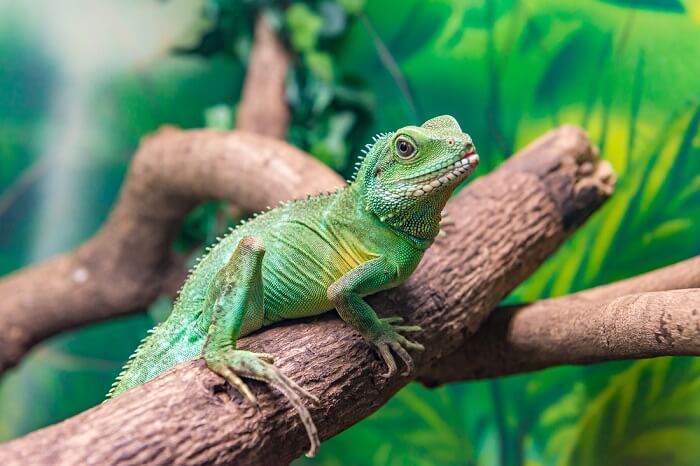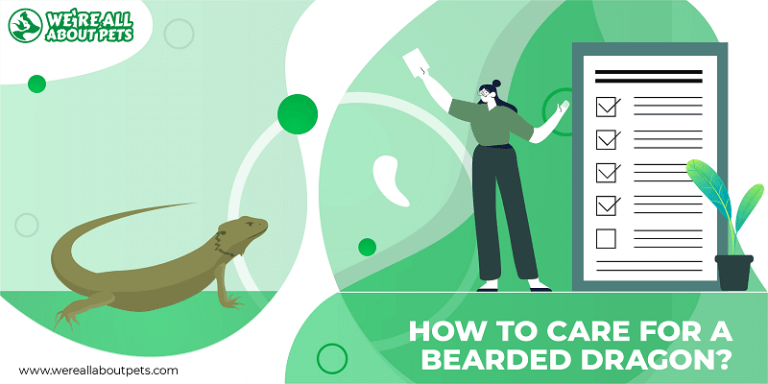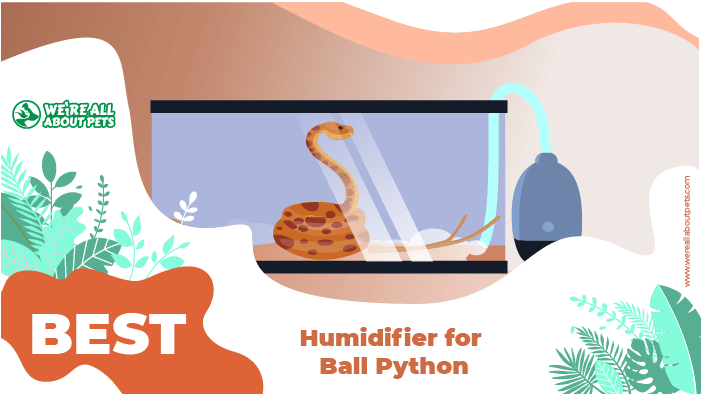How to Take Care of a Pet Frog
This page contains affiliate links. We may earn money or products from the companies mentioned in this post through our independently chosen links, which earn us a commission. Learn More
So, you’re thinking about getting a pet frog? Good for you for being here and doing research before the final decision. Frogs can make incredibly good pets if you can handle their special needs. There are many very colorful frogs, many with unique behaviors and great sounds. Just don’t be fooled into thinking they’re low-maintenance pets simply because it has an enclosure.
Frogs have very specific requirements for temperature, humidity and lighting. They also need a good amount of area to get exercise and a naturalistic habitat with hides to avoid stress in captivity. Although this can be work, that’s part of the fun of having these pets!
Before You Get A Frog
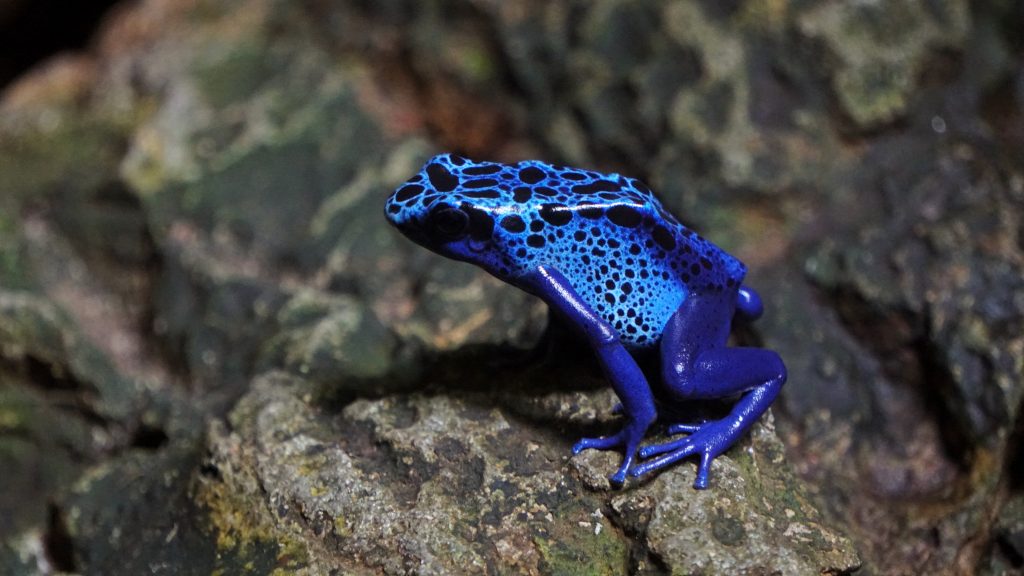
The first step is to decide what frog you would like to keep. Later in the article we’ll list some of the best frogs for first-time keepers. Look at the specific needs for the frog you want and make sure you’re able to handle that. Keep in mind, you need to account for having someone to help out if you’re away from home as well.
One of the most important things to look at is finding a species of frog that can be found as a captive-bred animal. As people who love animals and care deeply for our pets, we want to care equally well for the wild counterparts.
Many frog species are increasingly threatened by habitat loss, disease, climate change, and invasive species. Taking frogs from the wild only adds to the problems that the species are encountering and damages the ecosystems further.
Additionally, wild caught animals will experience more stress in captivity and will be more likely to introduce unwanted parasites and disease to other animals in your home.
Providing The Best Care
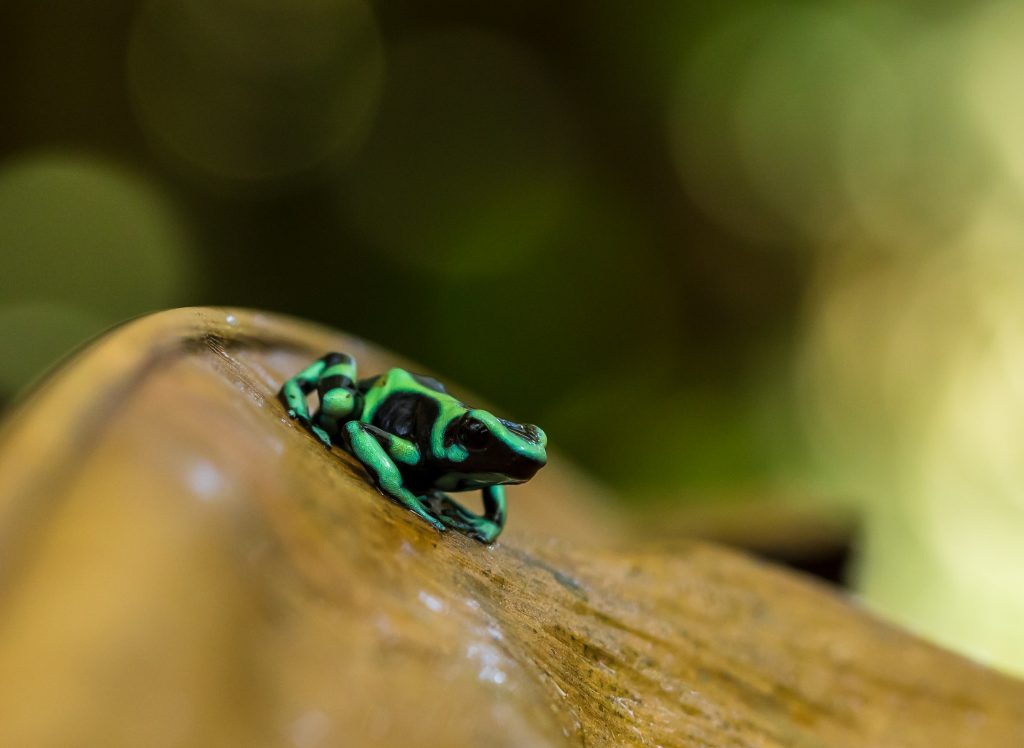
Looking at the specific frog will tell you detailed needs, but to stat, there are some general needs that can be introduced. Amphibians have close ties to the water, so they’ll need enclosures with a lot of humidity and an abundance of water.
In addition, they have extremely sensitive skin that remains permeable. That means the water quality and filtration has to be given a lot of attention. The sensitive skin also means that most amphibians aren’t well suited to being handled. If you’re looking for a pet that loves you back, frogs aren’t a good pick.
They’re healthiest and happiest when given a good enclosure, a healthy diet and little to no handling. Many species need to be housed individually, so if you want to have several frogs, be aware of which ones do well with that.
They will need a fair amount of space for their enclosure, with many requiring a 20-gallon area to thrive. Depending on the species, the enclosure may need to be wide (for ground-dwelling frogs), or tall (for frogs that like to climb). The enclosure will need to be able to be cleaned easily, but also have a naturalistic appearance and ability to hold humidity.

Many also have specific lighting needs, including UVB lighting. Heat needs to be provided for most frogs, usually into the mid 80s F. Planted habitats are a must for many frogs and great option for most, plus you get the added fun of caring for plants! Needless to say, they aren’t pets that can just be placed in a small cage to be admired but putting the work into giving them a great home that allows them to be happy and healthy can be really rewarding.
Finally, I recommend you have a health care plan for your new frog. Despite the best care, your pet may become sick or injured and require veterinary care on short notice. Most veterinarians won’t treat amphibians, so I recommend doing research in advance to find one in your area who does have the additional training to feel comfortable in caring for your pet frog.
Ideally, that care should include preventative medicine. New frogs should be observed in quarantine before being placed with any existing pets. Fecal testing for parasites and PCR testing for specific diseases like chytrid fungus are also wise health screening choices to ensure a healthy pet for years to come.
A good place to start your search is the find-a-vet page for the Association of Reptile and Amphibian Veterinarians. Some species of frogs can thrive well over ten years in captivity with good care!
What Are Some Good Species Of Frogs To Check Out?
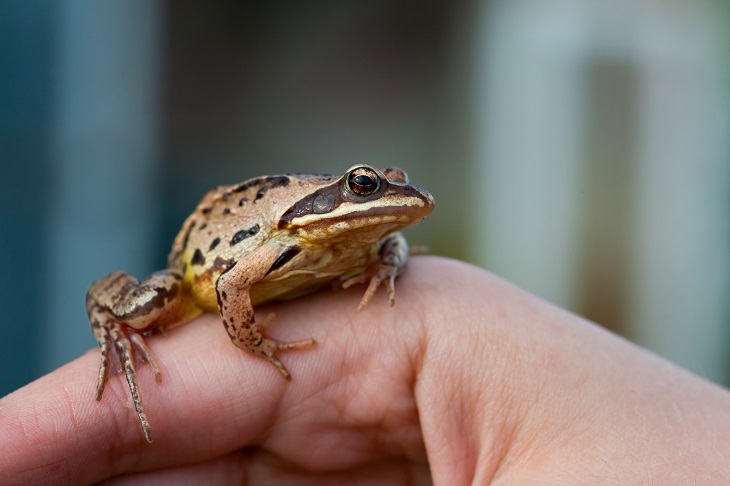
While there aren’t really any really easy species of frogs to care for, the ones on this list have no extremely detained needs and should do well with an enclosure 20 gallons (or less in some cases) that offers good humidity, low level UVB lighting and mild heat support. These species are all currently available as captive-bred animals.
| SPECIES | AVERAGE LIFESPAN | HOUSED ALONE OR GROUP | CAGE SIZE |
| Red-eyed tree frog | 4-10 years | Either | 10 gallon for individual, 20 gallons for 3-4 frogs – tall cage |
| Dart frogs | 7-10 years | Depends on the exact species: some can be in groups, others only pairs | 20 gallons or more – tall cage |
| White’s tree frog | 10-16 years | Paired with adequate space | 20 gallons for individual, much more for a pair- tall cage |
| Pacman frogs (aka Argentine horned frogs, Ornate horned frogs | 7-12 years | Alone only- they will likely harm tank mates | 15-20 gallon – long cage |
| African clawed frogs | 12-20 years | With adequate space | 15 gallon minimum, but 10 gallon minimum per frog with multiple animals – fully aquatic, so deep water required. |
| Tomato frog | 6-10 years | Pairs with adequate space | 20 gallons for individual, 30-40 for pairs – long cage |
A Few Last Notes:
All reptiles and amphibians can be a source of Salmonella, even when they are healthy. Routine hand washing is adequate protection for most people, but if you are getting a pet for a small child or anyone with a compromised immune system, I recommend discussing that with their family physician. You can learn more here and here.
Congratulations on this step towards adopting a wonderful and fascinating pet! It’s my hope that you continue your research and find the ideal frog for your home!

